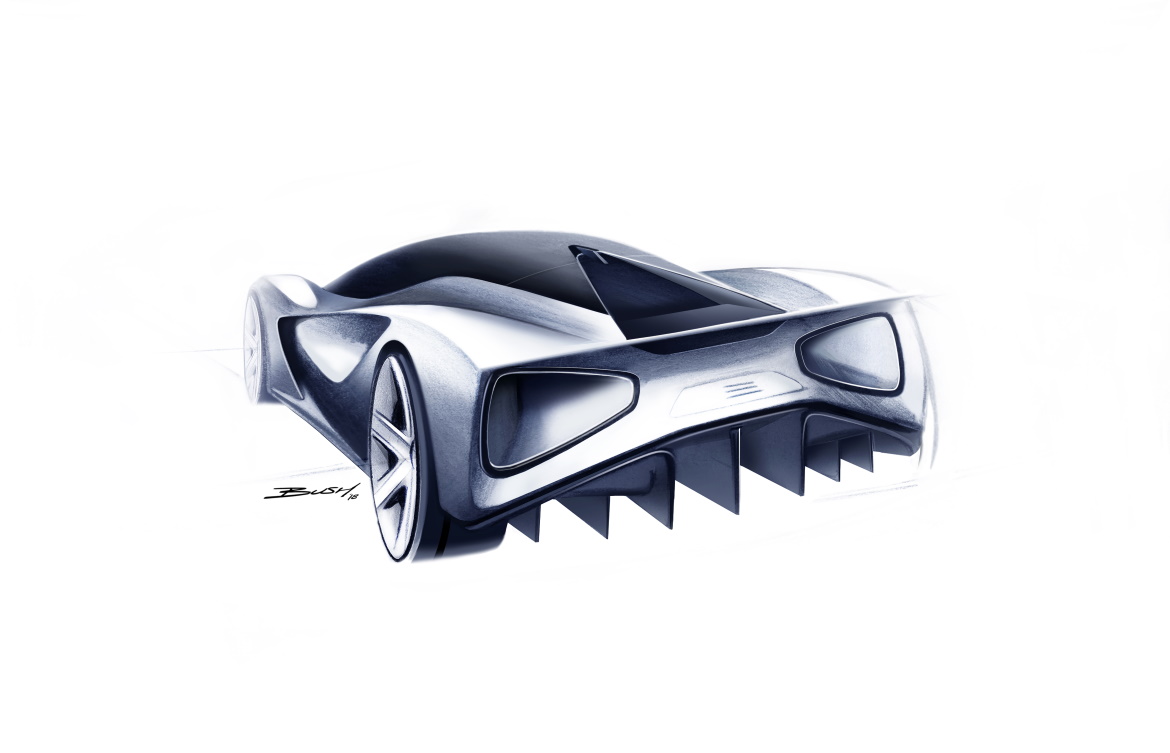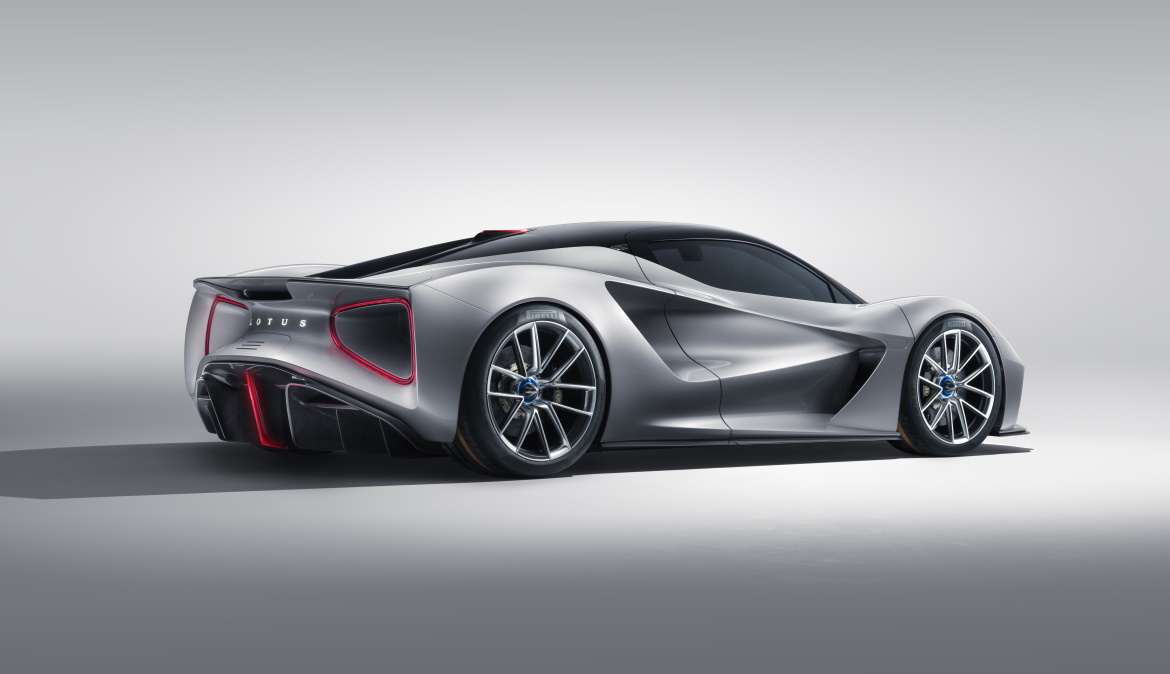The Lotus Evija, has been revealed. With performance and a target power output of 2,000 horsepower, it sets new standards in terms of advanced EV engineering. Quite simply, the Lotus Evija is the most powerful series production road car ever built. A piece of contemporary automotive design, the Evija features a dramatic Venturi tunnel through each rear quarter, giving it a truly breath-taking presence. “We studied how Le Mans race cars use air flow creatively to go over, under and around the vehicle, but also through it. This concept of ‘porosity’ is key to the Evija and has enabled us to create a timeless design with exceptional amounts of downforce”, said Russell Carr, Design Director at Lotus. The Evija signals the start of a contemporary new design language for Lotus, which will evolve and reappear on future high-performance cars.
Illustrative of the innovative thinking and ingenuity which has always been part of the Lotus DNA, the Evija is a technical tour de force. It continues the legendary Lotus bloodline that’s rich in firsts and technical game-changers, both in the automotive and motorsport sectors. While it is a glimpse of the future from Lotus, it remains true to the company’s DNA and the guiding principles of founder Colin Chapman, who built the first Lotus in 1948. The Evija is the first Lotus road car to feature a one-piece carbon fibre monocoque chassis. The cabin, from the fully adjustable race-style seats to the multi-function steering wheel, is the very pinnacle of motorsport-inspired road car design and technology.
At the heart of the Evija is an ultra-advanced all-electric powertrain. It has been developed by technical partner Williams Advanced Engineering, famed for success in motorsport, from Formula One to electrifying the first four seasons of Formula E. The battery pack is mid-mounted immediately behind the two seats and supplies energy directly to four powerful e-motors. It can race from 0-62 mph (0-100 km/h) in under three seconds and accelerate to a top speed of more than 200 mph (0-320 km/h).
















